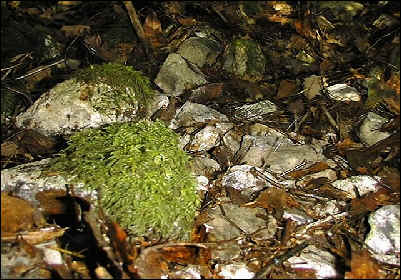 |
It is likely that this difference in growth-form is related to the number of silver birch trees which occurred in this area. The density of silver birch trees was fairly constant over the project site, except in the area of square 1, where the density was nearly doubled (Fig.4). |
Figure 4. Silver birch density. |
